Compression Therapy
What Is Compression Therapy?
Simply put, compression therapy involves using a device to exert controlled pressure on your limbs –especially your legs. These devices are often compression socks or stockings that are designed to support your veins and improve blood circulation.
Compression therapy not only helps manage venous and lymphatic disorders like varicose veins, deep vein thrombosis, and lymphedema but also reduces pain and heaviness in the legs. For those who don’t have circulatory disorders, compression therapy works to energize the legs and prevent future vein problems.
How does Compression Therapy Work?
A compression garment (like a stocking) squeezes the vein walls together by compressing the limbs. This applies pressure to your legs, which increases blood flow and prevents blood from pooling in the lower legs and feet.
This pressure is ‘graduated,’ which means it is strongest at the ankle and decreases as it goes up the leg. Graduated compression helps squeeze the veins and pump blood back to the heart, relieving tired legs, swelling, and other symptoms of venous and lymphatic disorders.
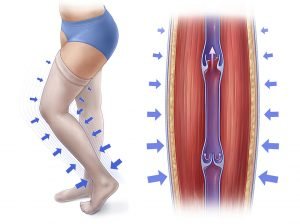
Who Needs Compression Therapy?
Compression therapy can help achieve amazing results – from fighting heavy legs after a long day at work to providing significant relief from venous and lymphatic symptoms. Several people can benefit from compression wear, including:
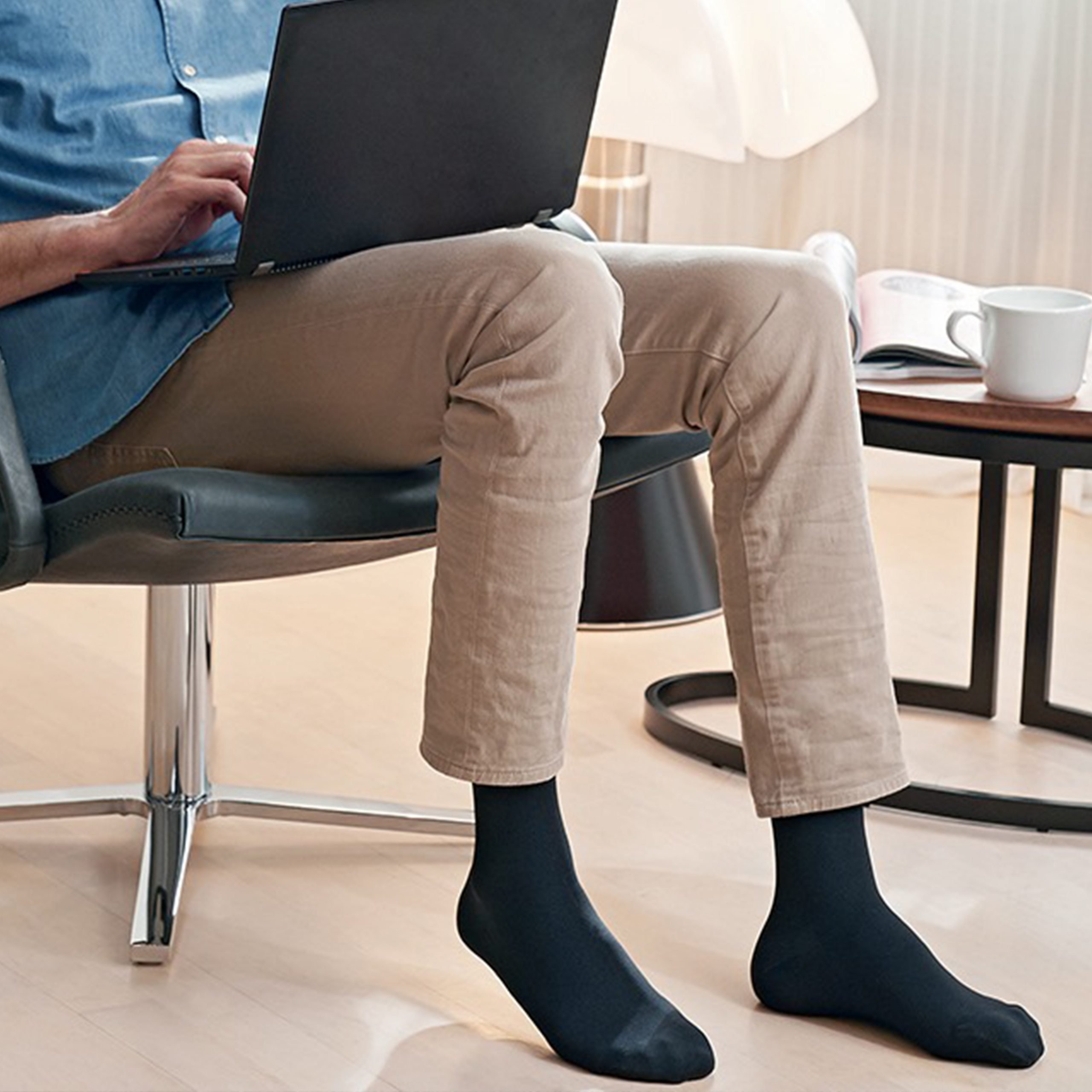
Those with LONG WORK DAYS
If your job involves sitting or standing for extended periods of time, your legs can come under a considerable amount of strain. This increases the risk of developing venous disorders.
Compression wear supports proper vein function, ensuring that blood flows smoothly and efficiently. You can feel the beneficial effects of compression wear right from the first use when it helps reduce tiredness and swelling. The regular use of compression wear also positively impacts the dynamics of blood flow, leading to increased cardiovascular fitness.
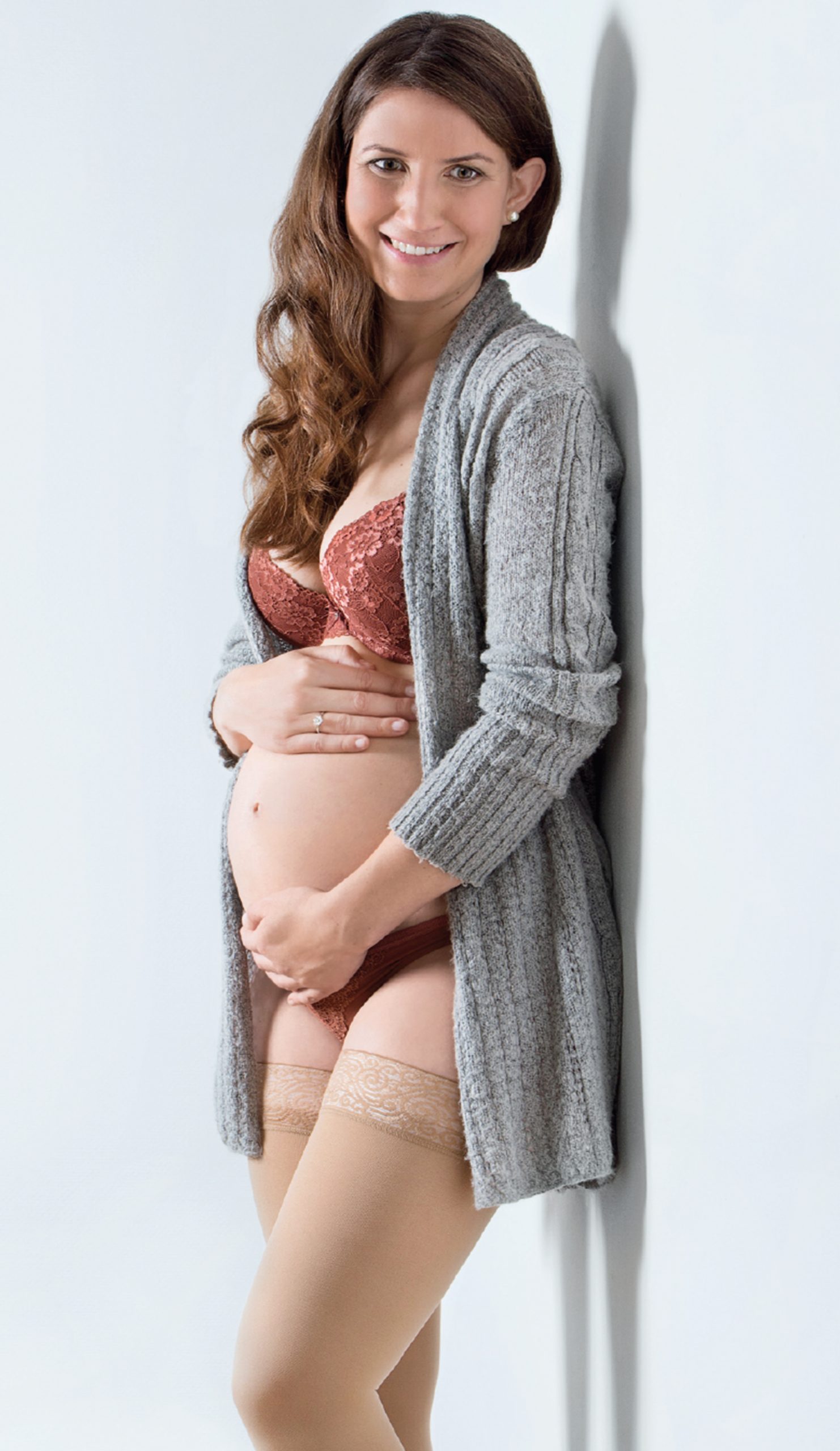
Those with a BABY ON THE WAY
The body undergoes substantial changes when making way for a baby. In order to support the baby, the amount of blood in the mother’s body increases by 40%-50%. Along with this, hormonal changes and pressure from the growing uterus also put additional pressure on the veins, especially in the lower legs. This increases the risk of developing vein-related complications such as Deep vein thrombosis (DVT) and varicose veins.
Did you know that in developed countries, most expectant mothers wear compression stockings daily? Doctors often prescribe medical compression stockings for expectant mothers because of their numerous benefits. They reduce the risk of clots and varicose veins, help with swelling and heaviness in the legs and improve blood supply to the womb. Research* also suggests that wearing compression stockings reduces pregnancy related morning sickness!
Recommended from the beginning of the pregnancy up to six weeks post delivery, medical compression stockings help in keeping legs healthy for a safe and comfortable pregnancy.
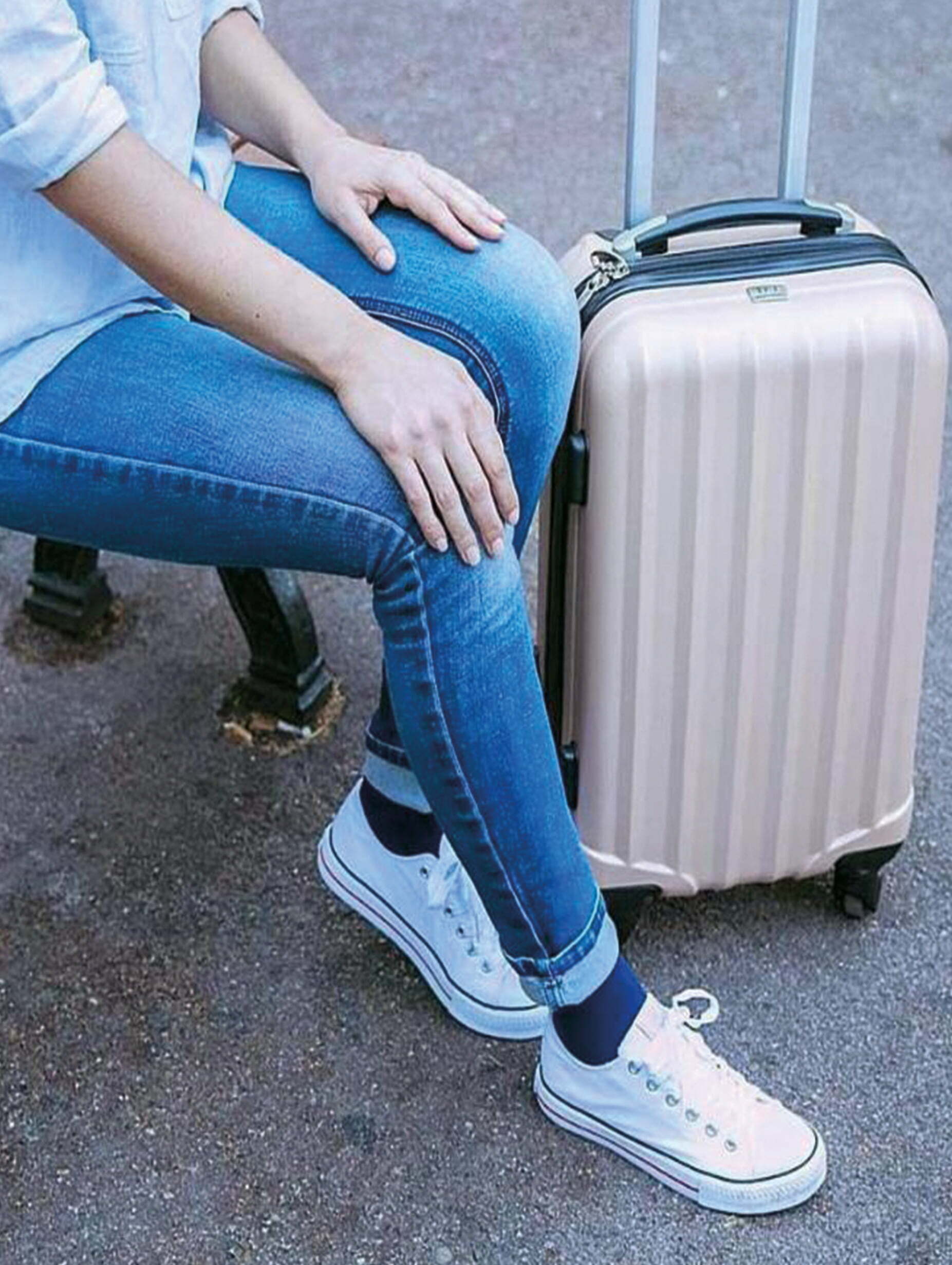
Those who TRAVEL LONG DISTANCES
Hours of travel often require sitting in one position for extended periods of time with restricted mobility. Whether it’s a long flight or a road trip, this can result in swollen legs, ankles, feet, and in certain cases, a more serious condition called ‘traveler’s thrombosis’ or ‘economy class syndrome.’ This is when extended immobility causes the blood to pool in the legs, leading to clot formations inside the veins that can have potentially serious consequences.
Compression stockings increase blood flow and are a simple, effective way to prevent travel-related leg symptoms. They reduce the risk of developing serious complications like DVT (deep vein thrombosis) and PE (pulmonary embolism).

Those with VENOUS DISORDERS
Venous diseases affect millions of people worldwide, and there are several factors that can contribute to their development. These disorders can affect those who are genetically predisposed to it or that lead a sedentary lifestyle. Venous disorders are also known to affect more women than men and people over the age of 50.
Healthy veins in the legs have valves that support the blood to flow back to the heart efficiently. Any damage to these valves causes blood to collect in the legs and feet, increasing the chance of developing venous disorders. These include conditions like varicose veins, spider veins, edema, leg ulcers, and deep vein thrombosis.
On medical advice by your healthcare professional, compression products can be used to prevent, manage and improve complications arising from venous disorders. Regular use of compression stockings assists damaged valves and improves blood flow. This can slow down the progression of the condition, making compression stockings an important tool in the management of various venous disorders.
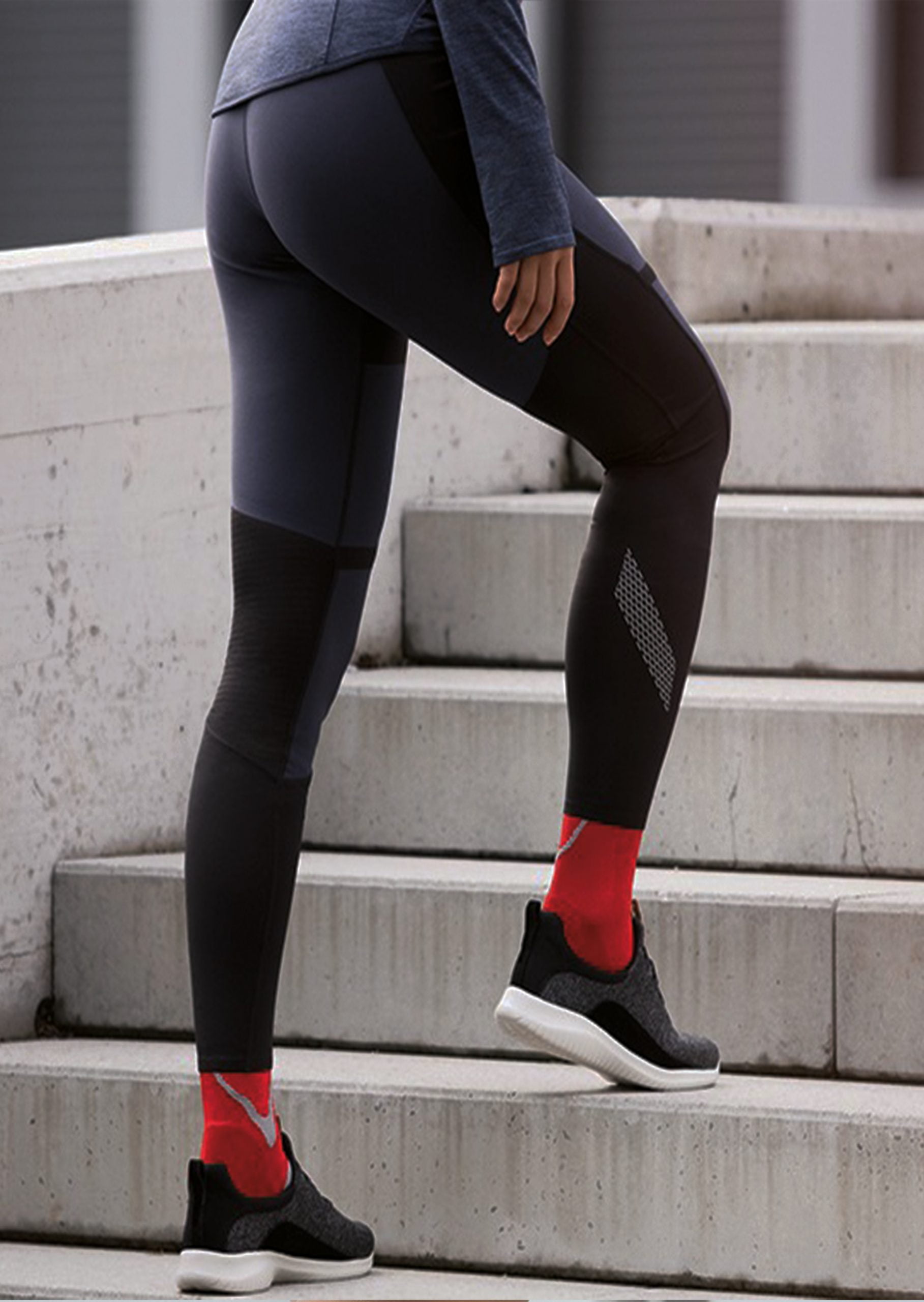
Those into RUNNING AND SPORTS
If you’re an athlete or someone who enjoys runs and workouts, compression therapy can help positively impact both performance and recovery.
Compression improves blood circulation, supplying more oxygen to the muscles. This increases the performance potential. Targeted pressure on the legs speeds up the return of blood flow, which beats the build-up of lactic acid (a waste product your body produces when you exercise). This lessens muscle soreness and supports muscle regeneration, speeding up recovery. Compression garments act as protection and can also reduce muscle vibrations, reducing muscle tears and injuries.
With all its benefits, compression therapy helps runners and athletes feel better, stronger, and more stable.
YOUR WAY TO HEALTHY LEGS – SIX EASY TIPS!
MOVE – Walk, climb, dance and indulge in regular physical activity to get your blood circulation going!
REVITALIZE – Refresh your legs after an exhausting day with a cool shower – especially in summer!
ELEVATE – Boost your body’s natural circulation with elevated legs – on the sofa, in bed or at work!
MANAGE – Managing your weight is a great way to decrease leg symptoms like swelling.
QUIT – Keep off the cigarettes to decrease your chances of developing disorders like varicose veins and leg ulcers.
WEAR – Boost circulation, increase leg energy and keep your legs healthy with compression stockings!
DO A QUICK 60 SECOND LEG CHECK HERE

